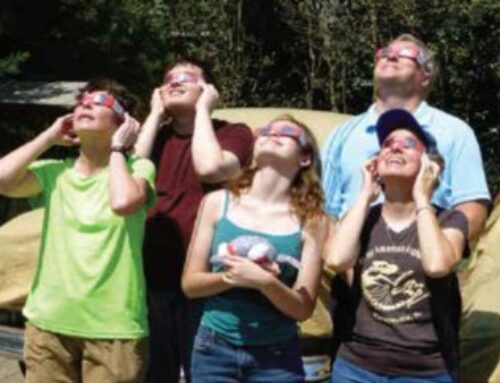(This article originally appeared in the Spring 2022 TAU-USA Issue #105)
 The National Formation Team unpacked the Ritual of the Secular Franciscan Order and revealed a treasure for the life of Franciscans. Written by the International Franciscan Liturgical Commission led by Benet A. Fonck, OFM, it was officially approved in English in 1985.
The National Formation Team unpacked the Ritual of the Secular Franciscan Order and revealed a treasure for the life of Franciscans. Written by the International Franciscan Liturgical Commission led by Benet A. Fonck, OFM, it was officially approved in English in 1985.
Formation Chair Diane Menditto, OFS, began the program with an historical overview of the Ritual. The Tertiary’s Companion, for example, was used prior to 1955. “(I)n 1966, in light of the Constitution on the Sacred Liturgy of Vatican II, the Commissaries General of the Franciscan Order urged the entire Franciscan world to engage in an overhaul of the rule, constitutions, and ritual of the Third Order.”
Following that recommendation, the New Ritual for Public Functions was compiled in 1973 by Benet A. Fonck, OFM and his associates. Father Benet, also spearheaded, the most recent version of the ritual in 1985. This version provides background information, liturgical guidelines, and prayers used at important events.
In the forward to the Ritual (p. vi), Diane noted, “we are urged to enrich our local celebrations with signs, symbols, gestures, music, and whatever practices are appropriate to enhance the spirit of prayer of the worshipping community.”
The Ritual: Pure Gold
Anne Mulqueen, OFS, spiritual assistant for the Formation Team, described the Ritual as “pure gold.”
“Two very important ‘golden threads’ found in the Ritual are our Secular Franciscan identity and heritage and an understanding that fraternity is a place where we belong.”
Through a quick overview of the Rite of Admission, she brought into focus the fact that the candidates are called “to live more intensely and faithfully their Baptismal promises; to follow Christ; to follow the example of St. Francis; to serve others; to live as a secular person; and all for the glory of God.”
Add to that the sense of belonging: “The fraternity promises to support the candidates on their journey. The fraternity also expects the candidates to enrich the fraternity… That’s what it means to belong! Mutual love and support.”
The Rite of Profession, she noted, “contains the most significant lifechanging statement. They are making a permanent commitment to the gospel life…It is life altering and there will be no turning back.”
Anne added that symbolic gifts are very important, conveying meaning that has an effect deeper than words can express. “Music, gesture, images, gifts all enhance prayer because they engage the senses as well as the intellect.”
The Ritual suggests the following gifts: at the ceremony of welcoming, a biography of St. Francis and St. Clare; at the rite of admission, the Tau and a copy of the Rule; at profession, a copy of the Holy Gospels. She adds, “The Gospel is much more than a symbol. It is to be internalized because to profess the Gospel, one must know the Gospel.”
She offered some points to remember:
- Rituals should be celebrated publicly in fraternity.
- Advance preparation and focused intention are vital.
- Everyone is expected to be a participant.
- When we gather, we are in the presence of GOD.
- Include your spiritual assistant in the planning.
The Ritual as a Formation Source
Layna Maher, OFS, and Justin Carisio, OFS, formation team members, explored how the Ritual can be used as a formation source. Layna began by emphasizing that “initial formation should anticipate and illuminate the Ritual.” She added that “rites strengthen our union with God.” Each rite has specifi c elements, she said; they include questioning the candidate, witnesses, the wording, the acceptance by the candidate and the symbols.
“Each rite is instructive and affirming of the vocation and life of the Secular Franciscan.”
For formation directors, she reminded that “the Rite of Profession incorporates into the ritual key themes to be explored and learned during initial formation.” These include: living the gospel following St. Francis, fidelity to the Church, maintaining the spirit of service, the importance of the Rule, the renewal of Baptism and Confirmation promises, that our mission is to rebuild the church, the centrality of life in fraternity, and the permanence of the commitment.
Justin then took the attendees through the rite of profession, acknowledging the beauty of the words and the intensity of their meaning. He emphasized that the candidates should be made aware of these words, the reality of their meaning and the commitment they are making long before they profess them as they stand publicly before the fraternity and the witnesses of the church.
Fraternal/Pastoral Visitations
Francine Gikow, OFS, and Mary Stronach, OFS, both members of the Formation Team, discussed the prayers for the Fraternal and Pastoral Visitation.
Francine addressed the fact that Article 92 of the Constitutions states the purpose of the visitation, which is to be a booster shot for those professed; to assure fidelity to the charism and rule; to help fraternity life in assisting in “issues” within the fraternal dynamics; to reinforce the unity of the Order, reminding everyone that each one of us lives in four fraternities – local, regional, national and international; to ensure that we are part of the Franciscan family and the Church, and to ensure that we reach out to the Friars, Poor Clares, and other branches of the Franciscan family.
She explained that within the prayers of the visitations, there is a ‘flow.’ “Sometimes they are reminders of our purpose, other times they are petitions or goals.” She added that we should “SAVOR the actual words of the prayers.” She highlighted the prayers and allowed the participants to embrace the message and tone of the words.
Mary then completed the program by reviewing the closing part of the Fraternal and Pastoral Visitation during which time the visitors have a fraternal dialogue with the fraternity members, offering observations, comments and recommendations for the fraternity, or, as the General Constitutions Article 93 say, “fraternal correction.”
She asked the participants to listen to the words of the closing prayer, during which time, “in fraternal love,” the fraternity visitor lift s the fraternity in prayer and reminds the fraternity to remain faithful to the Rule. Th e fraternal visitor instructs the fraternity to “be at peace, warn the idlers, give courage, care for the weak, be patient, do not take revenge, wishing the best for the brothers and sisters and for the community, be happy at all times, pray constantly, give thanks, and then, as a final reminder that we are Brother and Sisters of Penance, to prepare for the last days.”
She concluded with Francis’ blessing to Brother Leo: “May the Lord bless you and keep you. May his face shine upon you and be gracious to you. May he look upon you with kindness and give you his peace. May the Lord bless you, the Father, and the Son, and the Holy Spirit.”




Leave A Comment